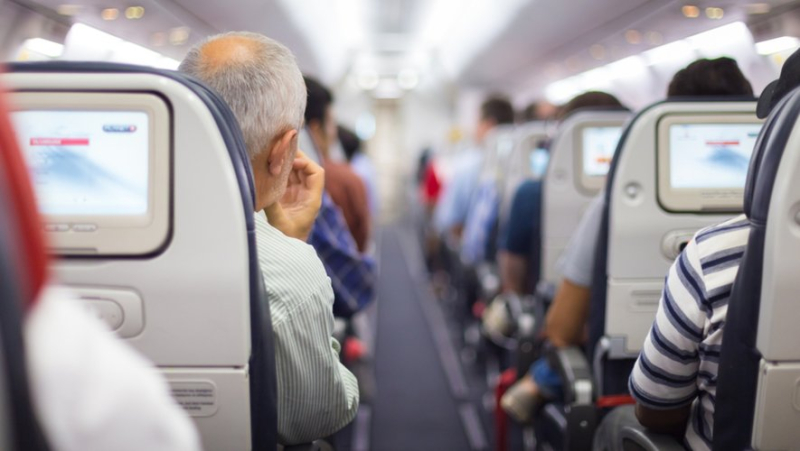Flatulence on a plane: how to explain the occurrence of these gases and how to avoid them ?

Pourquoi a-t-on des flatulences en avion et comment les gérer ?
La baisse de la pression de l’air dans un avion favorise la survenue de gaz et, par conséquent, d’éventuelles flatulences. Comment gérer la survenue de ces gaz ?
Flatulence is defined in the dictionary of the National Academy of Medicine as "an accumulation of air in the stomach or intestines". It is the "cause of painful sensations of bloating in the abdomen attributed by the subject to an excess of digestive gas, and sometimes accompanied by belching". The occurrence of these gases results in particular from the fermentation of molecules from foods, called oligosaccharides.
The pressure that expands…
By plane, the production of these digestive gases seems greater. This feeling is certainly due to the prolonged sitting position but it is mainly explained by the air pressure in the cabin, which is much lower than on dry land. The rapid reduction in pressure will thus lead to an expansion of gases within our intestine. They will somehow take up more space, hence this feeling of pressure: bloating which can therefore lead to flatulence
In 2019, an Australian team was interested in the health of airline crew members, notably through a questionnaire focused on sleep and relaxation. ;food. Among the responses, more than six in ten respondents (62%) reported living regularly, "often" even "very often", episodes of bloating and flatulence in flight.
This problem of flatulence in planes, however, faces a double problem: health and social. Holding in farts exposes you to intestinal pain and potentially severe discomfort. Which discomfort is transferred to your cabin neighbors, if you decide to release them! Without really deciding, science would rather lean towards releasing one's farts: so as not to expose oneself to pain but also as reported in a study dated 1975, to avoid the potential occurrence inflammations at the level of the diverticula, these small cavities which form on the surface of the colon.
What to do?
Release the gas, this is also what a Danish team recommends in a 2013 work, with additional advice given to airlines. The authors encourage them to slip activated carbon into their seats, a substance apparently capable of neutralizing bad odors and thus improving the comfort of all passengers.
More surely, during plane meals as well as the day before the trip, to limit the risk of flatulence, avoid foods that promote it. This is the case:
sodas and other carbonated drinks to avoid in favor of still water; legumes (lentils…) ; certain fruits such as apples or pears; certain vegetables such as cabbage and other broccoli; dishes rich in garlic and/or onion; white bread and wheat flour.




